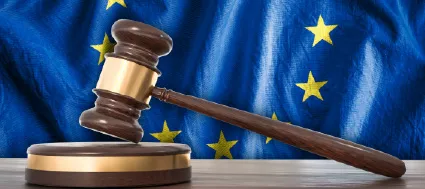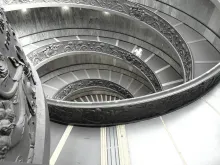Nissan Iberia case: the CJEU rules that the limitation period begins once the decision of the national competition authority is final
September 29, 2025
Suderow Fernández Abogadas, S.L.P
Background
On 23 July 2015, the Spanish Competition Authority (hereinafter, “CNMC”) issued a decision in case S/0482/13 Car Manufacturers. In it, it declared that various undertakings in the sector, including Nissan Iberia, S.A. (hereinafter, “Nissan”), had participated in an infringement prohibited by Article 1 of the Spanish Competition Act (hereinafter, “LDC”) and by Article 101 of the Treaty on the Functioning of the European Union (hereinafter, “TFEU”), consisting of an exchange of commercially sensitive information. This behaviour had ceased in 2013.
The CNMC announced the existence of the infringement in a press release on 28 July 2015 and subsequently published the full decision on its website on 15 September of the same year. The penalties imposed totalled €171 million. Nissan, together with other manufacturers, appealed the administrative decision. Still, all appeals were dismissed, and the validity of the decision was confirmed by the Supreme Court (hereinafter, “SC”) in its ruling of 7 June 2021.1 On the basis of this final decision, in 2022 and subsequent years, potential victims began to bring actions for damages. The vast majority of these actions are follow on, this is based on a previous decision by a competition authority declaring the existence of the infringement, so that the procedural debate is limited to proving the damage and determining its amount.2
In this case, CP's claim against Nissan is also a follow-on action, based directly on the CNMC's decision, once the Supreme Court had confirmed the decision and it became final. In the main proceedings and before the Court of Justice of the European Union (hereinafter “CJEU”), Nissan argues that the right to claim has already expired. To support this argument, it invokes Article 1968(2) of the Spanish Civil Code, which establishes a period of one year for bringing such actions from the time the injured party becomes aware of the unlawful conduct. According to Nissan, such knowledge must be dated, at the latest, 15 September 2015, the date on which the full ruling was published on the CNMC's website, preceded by the press release of 28 July. Therefore, Nissan considers that it was not necessary to wait for the ruling to become final before the time limit began to run.
Furthermore, the debate is influenced by the reform of the LDC entering into force, which transposed Directive 2014/104/EU on actions for damages for infringements of competition law, which was belatedly transposed into Spanish law by Royal Decree-law 9/2017, of 27 May, which incorporated Articles 71 to 81 of the LDC and Articles 283 bis a) to k) of the Civil Procedure Law. This regulation extended the limitation period from one year to five years. The controversy therefore lies in determining whether, in the so-called "car cartel" case, the dies a quo should be calculated from the date of publication of the sanctioning decision (2015), which would imply the application of the previous regime, or from the date on which it became final (2021), which would place the claim under the new limitation framework.
In 2024, Commercial Court No. 1 of Zaragoza referred a question for a preliminary ruling to the CJEU, registered as case C-21/24 Nissan Iberia,3with the aim of clarifying from what point the limitation period should be calculated in follow-on actions for damages arising from competition infringements and, consequently, whether or not the claims brought in this context are time-barred.
In essence, the Court of Zaragoza raises three questions to the CJEU:
· “Is there a legal basis in EU law for a distinction between the possibility and the obligation to bring an action for damages in respect of an infringement of competition or, conversely, once the injured party is aware or could reasonably have been aware both of the fact that he, she or it has suffered damage as a result of that infringement and of the identity of the perpetrator of the infringement, must that party bring such an action, and does the limitation period begin to run?”
· “For an action for damages to be brought before the judicial authority, must the party wishing to bring that action wait until the penalty has become final before the courts or, conversely, if the decision of the [CNMC], published in full, contains information about the identity of the perpetrators of the infringement in question, its exact duration and the products concerned by that infringement, must it be assumed that an action for damages may be brought before the courts and the limitation period begins to run?”
· “Should the publication of the full penalty on the official, public website of the [CNMC] be treated as equivalent to the publication of the summary of the European Commission’s decision in the Official Journal of the European Union for the purposes of the limitation period, given that the decisions of the [CNMC] are only published on the official website?”
The CJEU considered it necessary to reformulate the questions referred for a preliminary ruling to provide an answer that would enable the Court of Zaragoza to resolve the main dispute. In particular, it was clear from an analysis of the referral decision that what was really at issue was whether the claimant, who considered himself to have been harmed by an infringement of competition law declared in a CNMC decision published on its website on 15 September 2015 and which only became final after the judgment handed down by the Supreme Court in 2021, could validly bring the action for damages filed in March 2023 or whether, on the contrary, that action should be considered time-barred.
Essential precedents supporting the criterion established
The Nissan Iberia judgment must be interpreted in the light of progressive case law development in which the CJEU has outlined the principles governing the start of the limitation period for damage claims for infringements of competition law.
The Masterfoods4judgment is an initial reference point. It stated that, when national courts rule on agreements or practices that have already been the subject of a decision by the European Commission, they are prohibited from issuing rulings that contradict the latter's decision, even if there was a previous national court decision to the contrary. The Court based this obligation on the principle of legal certainty and the duty of sincere cooperation set out in Article 4.3 TEU, from which derives the requirement to avoid any significant risk of conflict. Consequently, national courts must recognise the full effectiveness of decisions of the European Commission, even if they are being appealed, unless the CJEU suspends their enforcement, or if they consider that a decision is invalid and lodge an appeal with the CJEU5.
Moreover, in the Cogeco Communications6judgment, the CJEU declared that a national regime setting a limitation period of three years regardless of whether the victim had or could reasonably have had sufficient knowledge of the infringement, its perpetrators and the damage suffered was incompatible with the principle of effectiveness. The CJEU pointed out that neither the length of the limitation period nor the conditions for its commencement may make it excessively difficult or practically impossible to exercise the right to full compensation, so that only a regime that guarantees the victim a real and effective remedy can be considered valid.
Furthermore, in the Repsol Comercial de Productos Petrolíferos7judgment, the CJEU further developed this line of reasoning in the context of fuel distribution contracts. It consolidated the idea that a final decision by a national competition authority, acting in its sanctioning capacity, must be given privileged evidentiary value in civil proceedings for damages resulting from infringements of competition rules. The CJEU established that, if there is material, temporal and territorial correspondence between the facts stated in the decision and those alleged in the damages action, the infringement must be deemed proven unless there is evidence to the contrary, which shifts the burden of proof to the defendant. In particular, the CJEU, following the opinion of Advocate General Pitruzzella, emphasised the need to give these decisions prima facie or "principle of proof" effectiveness, in order to ensure the full effectiveness of Article 101 TFEU and to avoid excessive obstacles to the exercise of the right to compensation. Thus, the national court cannot ignore the content of final decisions or require a repetition of evidence that undermines the principle of procedural effectiveness and has a duty to justify any divergent decision in a reasoned manner and in accordance with the value of the evidence attributed, unless proven otherwise.
Against this background, the CJEU judgments in the Heureka Group8and Volvo/DAF9cases are necessary for understanding the scope of the doctrine established in the Nissan Iberia case.
In both rulings, the CJEU specified that the start of the limitation period for actions for damages is conditional upon the fulfilment of two essential requirements: (i) on the one hand, the prior cessation of the infringing conduct10, and on the other, (ii) the injured party must have, or be reasonably able to have, sufficient knowledge of the essential elements for the exercise of its claim, including knowledge of the existence of the infringement, confirmation of the existence of the damage and identification of the responsible parties.
In the Volvo/DAF case, the CJEU responded to a request for a preliminary ruling from the Provincial Court of León relating to a national proceeding in which an action for damages was brought on the basis of the European Commission's decision in case AT.39824 – Trucks. The CJEU emphasised that, in line with the principle of effectiveness in Article 101 TFEU, the mere public announcement of a sanctioning decision, such as a press release from the European Commission, does not provide the injured parties with the degree of certainty required to effectively bring an action for damages. It therefore concluded that, in principle, it can reasonably be considered that the injured party has all the information necessary to bring an action for damages within a reasonable period of time on the date of publication of the official summary of the European Commission's decision in the Official Journal of the European Union (hereinafter “OJEU”), which accurately sets out the nature of the infringement, its duration and the identity of those responsible.
The Heureka judgment arises from a request for a preliminary ruling referred to the CJEU by the Municipal Court in Prague in connection with a claim for damages by Heureka, a Czech undertaking providing online price comparison services. Heureka claimed damages from Google on the basis of the European Commission's decision in Case AT.39740 - Google Shopping, which was not final. However, for the CJEU, it was irrelevant that the European Commission's decision was not final, as it already provided all the information necessary for Heureka to bring an action for damages against Google. The Court expressly stated that publication in the OJEU triggers the limitation period without the need to wait for a final court ruling, since European Commission decisions, in accordance with Article 16(1) of Regulation 1/2003, are automatically binding on national courts, which cannot question the existence of the infringement declared. In this regard, the fact that the decision is challenged before the European Courts does not affect the binding effect of the Commission's decision on the national courts. In such cases, from the date of publication of the European Commission's decision, it is presumed that any injured party can have reasonable knowledge of the existence of an infringement, the damage suffered and the identity of the perpetrators of the infringement.
In contrast, the Nissan Iberia case concerned the principles governing claims for damages where the finding of an infringement does not come from the European Commission but from a national competition authority. Unlike Commission decisions, whose binding force on national courts derives expressly from Article 16 of Regulation (EC) No 1/2003 – a provision that prevents them from adopting decisions contrary to a previous decision of the European Commission declaring an infringement of Article 101 or 102 TFEU – decisions by national competition authorities do not have automatic binding effect on national courts.
In the words of Advocate General Kokott in the Cogeco case: “This particular binding effect, which follows from Article 16(1) of Regulation No 1/2003 and from the Masterfoods case-law, is founded on the key role of the Commission in shaping competition policy in the European internal market and ultimately also on the priority of EU law and the binding nature of rulings given by EU bodies. It cannot be extended in the same way to the decisions of national competition authorities unless the EU legislature expressly provides for this, as has been done for the future with Article 9 of Directive 2014/104.”11
Main conclusions of the Nissan Iberia ruling
The ruling handed down on 4 September by the CJEU definitively settles the debate: the limitation period for follow-on actions does not begin with the administrative publication of the decision by the national competition authorities, but only when it becomes final in court.
In this regard, in the case analysed by the judgment, the limitation period cannot be calculated from 2015, nor from the date of the press release, nor from the full publication of the decision on the CNMC website, but from 2021, when the Supreme Court dismissed each of the manufacturers' appeals and upheld the administrative penalty. Only from that date does the five-year period begin to run. Thus, the actions for damages arising from this infringement will remain valid until at least 2026.
Distinction between decisions of the European Commission and national competition authorities
The CJEU justifies this solution with a central argument: while European Commission decisions declaring infringements of Articles 101 or 102 TFEU are automatically binding on national courts under Article 16(1) of Regulation 1/2003, the same does not apply to decisions of national competition authorities when they have been challenged in court. This distinction between the binding force of Commission decisions and the effectiveness of infringement decisions issued by national competition authorities had already been introduced in the Heureka Group12judgment, laying the foundations for the differentiated interpretation that has been reaffirmed in Nissan Iberia.
As clarified by the CJEU, a national court can only be bound by the finding of infringement contained in a decision by a national competition authority once that decision has become final. Otherwise, imposing on the injured party the burden of taking action while the validity of the decision is pending judicial review would deprive them of effective legal support and place them at a procedural disadvantage incompatible with the principles of effectiveness and effective judicial protection. In this regard, as Advocate General Laia Medina emphasised in her Conclusions, 13judicial proceedings often annul, in whole or in part, the decisions of national competition authorities.14Consequently, until the decisions of the national competition authorities are final, the injured parties have no certainty as to the very existence of the infringement, its temporal extent, the persons responsible or the extent of the damage caused.
Thus, the Nissan Iberia ruling draws a clear distinction based on the origin of the sanctioning decision. In the case of the European Commission, as mentioned above, its decisions have immediate and general binding effect in all Member States, so that, from the moment of their publication in the OJEU, individuals have the legal certainty necessary to claim damages.
On the other hand, in the case of decisions issued by a national competition authority, the legal effectiveness of the decision is subject to internal judicial finality, so that only when the decision becomes final after passing judicial review can it be considered a valid starting point for calculating the limitation period.
This requirement follows from Article 9(1) of Directive 2014/104/EU, which provides that “an infringement of competition law found by a final decision of a national competition authority […] is deemed to be irrefutably established for the purposes of an action for damages.” Legal doctrine explains that this limitation responds to the administrative nature of decisions by national competition authorities, which, unlike judicial decisions, do not enjoy automatic recognition even in their own jurisdiction until they have passed judicial review. Their territorial and material effectiveness is more limited than that of a court judgment, and for this reason, the European legislator required finality in order to give them genuine binding effect in follow-on actions.
In doing so, the CJEU not only reinforces the principle of legal certainty, but also protects procedural balance in competition matters, preventing defendants from benefiting from a delaying strategy based on protracted litigation. Finality is therefore an essential condition for those affected to be fully and definitively aware of the existence of the infringement and to be able to take action with full guarantees.
Coordination with the interruption/suspension regime during judicial review of the decision
However, this requirement must be coordinated with the interruption/suspension regime for the limitation period. The CJEU, in its Heureka Group judgment, stated that Articles 101 and 102 TFEU, interpreted in the light of the principle of effectiveness, require the suspension or interruption of the limitation period for the duration of the enforcement proceedings by the Commission or the national competition authority. The suspension or interruption must occur regardless of the knowledge that the injured party may have of the infringement, since the ratio for the suspension is not linked to such knowledge (dies a quo), but to the need to ensure that the action for damages can be brought in conditions of legal certainty and with adequate supporting evidence. As the CJEU emphasised, allowing the limitation period to expire before a final decision is made would make it "excessively difficult" to exercise the right to full compensation recognised by EU law.
This case law criterion is reflected in Article 10.4 of Directive 2014/104/EU, which requires Member States to provide for the limitation period to be suspended or interrupted (each Member State may choose which) during proceedings conducted by a competition authority and until at least one year after the decision becomes final. In this way, the system articulates a dual mechanism: the need for finality (Article 9.1) as a prerequisite for binding effectiveness; and, on the other hand, the suspension or interruption of the limitation period (Article 10.4) until such finality is achieved.
Publication and accessibility of decisions: requirements and open questions
In addition, the CJEU specifies that the requirement relating to knowledge of the information necessary for the exercise of the right to claim damages requires not only that the decision has become final, but also that it is officially published, freely accessible to the public and clearly states the date of its publication.
The publicity and accessibility of penalty decisions issued by national competition authorities, as well as court judgments confirming or reviewing such decisions, are essential guarantees for the protection of the interests of those harmed by anti-competitive conduct.
The CJEU has stated, as obiter dicta, in the Nissan Iberia case that, in order for the injured parties to have the required information to bring their actions, it is necessary that the decision, and in particular the judgment declaring it final, be “officially published, it must be freely accessible to the general public and the date of its publication must be clearly set out in that publication.”15In the opinion of the CJEU, publication on the website of the administrative authority is not sufficient, whereas official publication of the court judgment meets these requirements. The underlying reason is that only the judicial finality of the decision, and the resulting public certainty as to its existence and scope, can give rise to a reliable and predictable start of the limitation period for claiming damages.
It should be noted that Nissan Iberia raises several questions regarding publication: (i) what happens if the official publication does not include the date of publication?; (ii) what happens if there is no public information on whether there was an appeal or which part of the decision was appealed?; or (iii) what if the binding decision is only available in the language of the Member State? It is clear that national competition authorities and courts in Member States must review their practices and increase transparency and public information in these cases, ensuring that final decisions are accessible, comprehensible and contain all the elements necessary to activate the limitation period in a certain and predictable manner. Ideally, national competition authorities and courts in Member States should now strengthen their standards of official publicity, ensuring both the express recording of the date of publication and the availability of clear information on the finality of decisions and the status of appeals. Only in this way will the doctrine established by the CJEU be fully effective and future disputes over the start of the limitation period in follow-on actions be avoided.
However, the CJEU itself has specified that these requirements do not constitute the ratio decidendi of its ruling and, therefore, do not constitute a formal and strict requirement whose absence alone can deprive the right to compensation of its effectiveness. Thus, the requirement of publicity must be understood functionally as a guarantee of effective access to legal action, not as a formality whose absence paralyses judicial protection.
The doctrine of the CJEU in line with the case law of the Supreme Court
The CJEU's interpretation in the Nissan Iberia judgment is in line with the evolution of national case law, as highlighted by the recent judgments of the Supreme Court of 5 June 202516and 17 June 202617on the so-called "envelope cartel". In this ruling, the First Chamber of the Supreme Court had already opted for finality as the starting point for the limitation period, expressly rejecting the criterion of simple administrative publication. Hereby, the Supreme Court reinforced the idea that only when the CNMC's decision is free of challenges and becomes final do those affected have the legal certainty necessary to bring their actions with full guarantees.
The Supreme Court also emphasised that pending contentious-administrative appeals may affect substantial elements of the infringement, its classification, its duration or even the liability of the undertakings involved, making it impossible to require the injured party to take action without a stable legal basis. In the words of the Chamber, “it prevents the limitation period from starting or running while the decision is not final, at least when an appeal has been lodged against it that is likely to alter its content and rulings [...] since, until the challenge is resolved, it is not possible to know its objective and subjective scope and, consequently, the basic elements for weighing up and, where appropriate, exercising the claim in question with a degree of certainty.”18
Thus, the Supreme Court recalls that the finding of an infringement by a national competition authority, once it has become final, has binding effects as regards the existence of the infringement, its duration and its protagonists, and, on a factual level, allows a presumption of damage resulting from it to be inferred, even in the absence of a specific quantification of its economic effects: “the date on which the decision becomes final is the moment when it can be stated categorically that all the elements necessary for the exercise of the action have been formally established as judicial truth.”19
The criteria established by the CJEU confirm Spanish jurisprudence and have immediate effects on numerous CNMC decisions or from other Member states that are still pending in litigation. This is the case, for example, of the milk cartel20, whose second penalty decision was handed down by the CNMC on 11 July 2019 and is currently under appeal, and the PET-18F-FDG radiopharmaceutical cartel21, penalised by a CNMC decision of 9 February 2021, which is also not yet final. In all these cases, in our view, the five-year period will not begin until these resolutions become final, which preserves the possibility of follow-on actions by those affected by the anti-competitive practices.
- 1Supreme Court ruling of 7 June 2021, appeal number 5428/2020, ECLI:ES:TS:2021:2439.
- 2See in this regard: Mass Antitrust Damage Claims in Spain Against the Car Manufacturers Cartel | Kluwer Competition Law Blog
- 3Judgment C-21/24, 4 September 2025, ECLI:EU:C:2025:659.
- 4Judgment C-344/98, 14 December 2000, ECLI:EU:C:2000:689.
- 5Calvo Caravaca, A. L., & Suderow, J. (2015). El efecto vinculante de las resoluciones de las autoridades nacionales de competencia en la aplicación privada del Derecho antitrust. Cuadernos de Derecho Transnacional, 7(2), 114-157. Available at : https://e-revistas.uc3m.es/index.php/CDT/article/view/2781/1559.
- 6Judgment C-637/17, of 28 March 2019, ECLI:EU:C:2019:263.
- 7Judgment C-25/21, 20 April 2023, ECLI:EU:C:2023:298.
- 8Judgment C-605/21, 18 April 2024, ECLI:EU:C:2024:324.
- 9Judgment C-267/20, 22 June 2022, ECLI:EU:C:2022:494.
- 10Volvo/DAF judgment, paragraphs 56, 57 and 61; Deutsche Bank order, C-198/22, 6 March 2023, ECLI:EU:C:2023:166, paragraph 66; Heureka judgment, paragraphs 55, 78-79, 86 and 89.
- 11Judgment C-637/17, 28 March 2019, ECLI:EU:C:2019:263.
- 12Judgment C-605/21, 18 April 2024, ECLI:EU:C:2024:324, paragraph 74.
- 13Conclusions C-21/24, 3 April 2025.
- 14See in this regard: Start of the limitation period and decisions of national competition authorities, Christian Kersting, published by Almacén de Derecho
- 15Nissan Iberia judgment, paragraph 75.
- 16Appeal number 3699/2022, ECLI:ES:TS:2025:2621.
- 17Appeal number 426/2023, ECLI:ES:TS:2025:2857.
- 18Sixth legal basis, page 22.
- 19Ninth legal basis, page 27.
- 20Case S/0425/12 - INDUSTRIAS LÁCTEAS 2.
- 21Case S/0644/18 – RADIOFÁRMACOS.
You may also like








